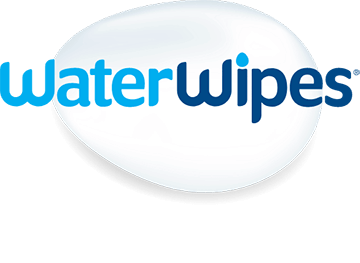Who invented Baby Wipes?
Baby wipes were initially invented by Arthur Julius, a cosmetics expert, in 1957. However, the original wet wipes were marketed as cleaning products for busy people on the go, as a response to travel becoming more accessible and more affordable. In 1958, Wet-Naps were launched. Five years later, these disposable wet wipes could be found in every Kentucky Fried Chicken store.
Baby wipes inventor Julius is said to have created the original Wet-Naps in his home apartment in New York. These wipes were made from woven cloth soaked in water and a cleansing solution, to improve skin hygiene for people when out and about1.
When did Baby Wipes come out?
Baby wipes officially launched in 1983, although wet wipes had already been growing in popularity throughout the 1970s. These wipes were formulated specifically to address the unique delicate nature of babies’ skin.
As babies have not yet properly developed barriers, their skin is more delicate, and it is extra important to keep babies clean. With baby wipes, parents could now quickly and easily change nappies or clean up spills on the move, without having to carry dirty cloths around with them afterward.
Today, the global baby wipes market is valued at $4.7 billion (as of 2022), a testament to the popularity of the invention.
The history of WaterWipes
WaterWipes were created by Edward McCloskey, owner of skincare product company Irish Breeze Ltd. When his baby daughter experienced bad nappy rash, McCloskey struggled to find a wet wipe on the market that was suitably chemical-free – with ingredients that were great for cleaning, but not so good for delicate skin5.
Years of scientific research, testing, and hard work later, WaterWipes were launched as an alternative. All the convenience of a traditional wipe, yet as gentle as cotton wool and water. Fifteen years later, WaterWipes are available in over 50 countries. Learn more about the WaterWipes story here.
What WaterWipes are made of
What makes WaterWipes unique is the ingredients, which are almost pure water. The woven cloths are soaked in 99.9% water, with just 0.1% grapefruit seed extract. The fruit extract works as a natural conditioning agent for even the most delicate skin.
The water is purified in a unique seven-stage process which delivers a more effective, deeper clean when compared to both boiled, cooled tap water and standard cold tap water. This water technology means WaterWipes can be made with as few ingredients as possible, while still offering a deep clean that is safe to use on even the most sensitive newborn skin.
FAQS
When did Baby Wipes become a thing?
Baby wipes, as in wipes specifically designed to care for babies’ skin, were launched in 1983. Although wet wipes had been on the market for some years previously, new manufacturing methods made it possible at this time to mass produce the products.
What did they use before Baby Wipes?
Before baby wipes, parents had to use washable cloths and rags with water and cleaning solution to clean their babies. This may have been OK at home but made things difficult when needing to clean on the go.
Are Baby Wipes more hygienic?
Yes, baby wipes are often more hygienic – clinical studies over the past 15 years have found cleaning with formulated baby wipes to be superior or the same as cleaning with a cloth and water.
How we wrote this guide
The information in this guide is based on several different sources, including the National Library of Medicine and the Irish Examiner.

